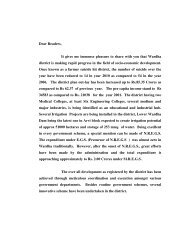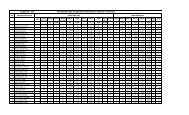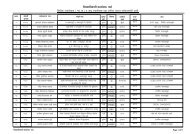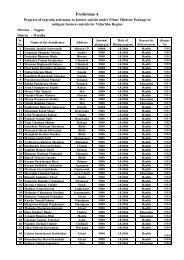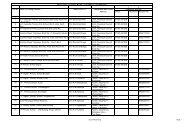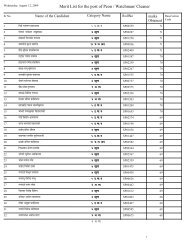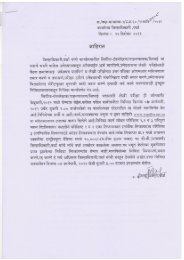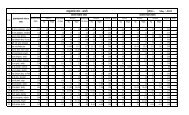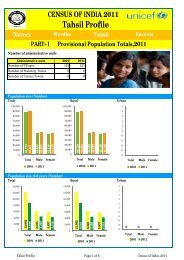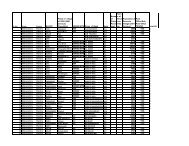You also want an ePaper? Increase the reach of your titles
YUMPU automatically turns print PDFs into web optimized ePapers that Google loves.
<strong>Annexure</strong> - G<br />
Disaster Supply Kits<br />
(72 hours emergency kits for seniors, disabled)<br />
Assembling the supplies you might need following a disaster is an important part<br />
of your disaster plan. You should prepare emergency supplies for the following<br />
situations:<br />
A disaster supply kit with essential food, water, and supplies for at least three<br />
days-this kit should be kept in a designated place and be ready to "grab and go" in case<br />
you have to leave your home quickly because of a disaster, such as a flash flood or major<br />
chemical emergency. Make sure all household members know where the kit is kept.<br />
Consider having additional supplies for sheltering or home confinement for up to<br />
two weeks. You should also have an additional disaster supply kit at work. This also<br />
should be in one container, ready to "grab and go" in case you have to evacuate the<br />
building.<br />
The following checklists will help you assemble disaster supply kits that meet the<br />
needs of your household. The basic items that should be in a disaster supply kit are water,<br />
food, first-aid supplies, tools and emergency supplies, clothing and bedding, and specialty<br />
items. Keep items in airtight plastic bags and put your entire disaster supply kit in one or<br />
two easy-to-carry containers such as an unused trashcan, camping backpack or duffel bag.<br />
Water: the absolute necessity<br />
• Stocking water reserves should be a top priority. Drinking water in emergency<br />
situations should not be rationed. Therefore, it is critical to store adequate amounts<br />
of water for your household.<br />
• Store water in thoroughly washed plastic, fiberglass or enamel-lined metal<br />
containers. Don't use containers that can break, such as glass bottles. Never use a<br />
container that has held toxic substances. Sound plastic containers, such as soft<br />
drink bottles, are best. You can also purchase food-grade plastic buckets or<br />
drums.<br />
• Containers for water should be rinsed with a diluted bleach solution (one part<br />
bleach to ten parts water) before use. Previously used bottles or other containers<br />
may be contaminated with microbes or chemicals. Do not rely on untested devices<br />
for decontaminating water.<br />
72



